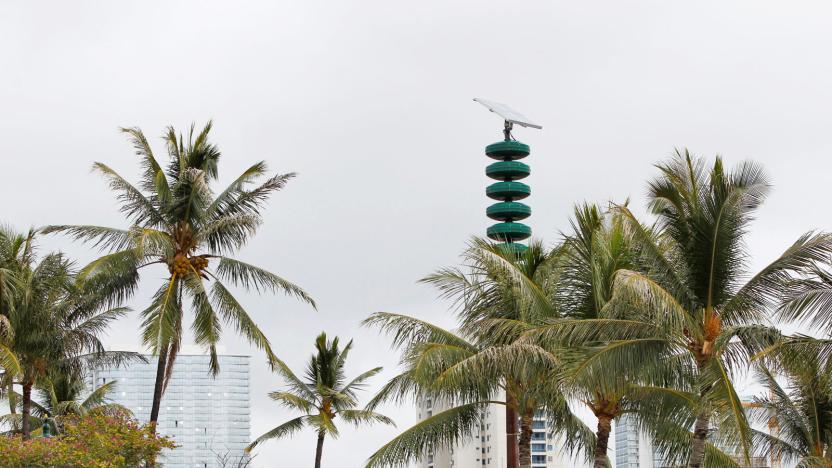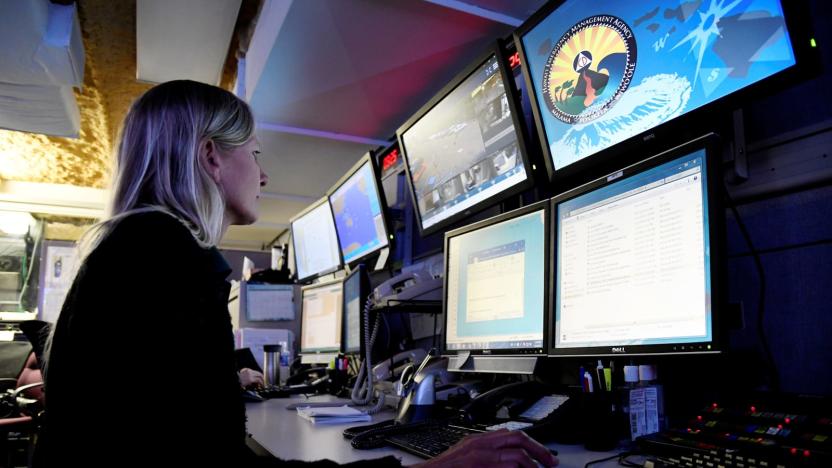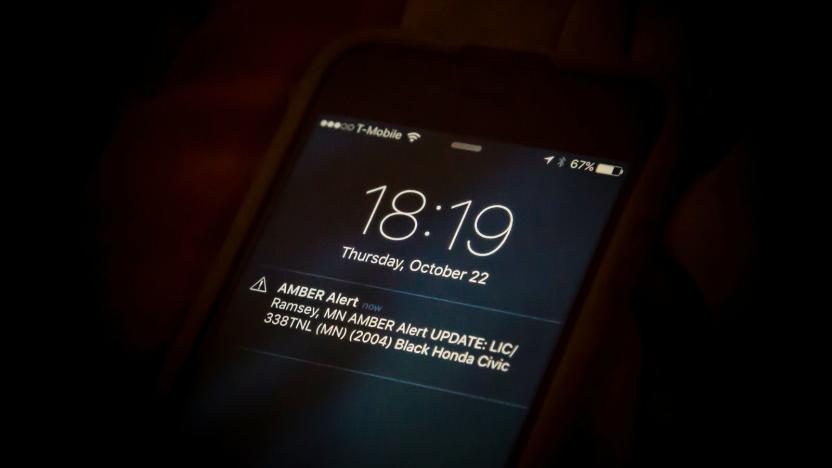WirelessEmergencyAlerts
Latest

FCC: Officer behind Hawaii false missile alert thought it was real
The FCC has published the preliminary findings of its investigation into Hawaii's false missile alert, and it suggests that the story didn't play out as you might have heard. Where initial reports claimed the Hawaii Emergency Management Agency officer who triggered the mass panic clicked on the real alert by mistake, the FCC said the officer fully intended to click it -- because they'd misinterpeted a mangled message. Reportedly, the midnight shift supervisor had played a standard recording that included both the usual "exercise, exercise, exercise" language and the text from a real Emergency Alert System message, which includes "this is not a drill." Although other officers saw this was a drill, the one who clicked the alert was convinced it was real.

FCC investigates Hawaii's false missile alert
It's not just state officials who are investigating Hawaii's false alarm over a (thankfully non-existent) missile attack. FCC Chairman Ajit Pai has confirmed that the regulator's investigation into the error is "well underway." While Pai shied away from making many definitive statements early on, he said that early findings suggested Hawaii didn't have "reasonable safeguards or process controls" to prevent a mistaken alert.

Wireless Emergency Alerts are about to get more detailed
The FCC has voted to strengthen the Wireless Emergency Alerts system, which sends warnings about missing children, natural disasters and other dangerous events directly to citizens' cell phones. The new rules allow government officials to write up to 360 characters, rather than 90, for 4G LTE and future networks, and it requires participating carriers to support the use of embedded phone numbers and links in all alerts. For example, in an AMBER Alert, the message may now include a link to a photo of the missing child.

AT&T issues Wireless Emergency Alerts update to iPhone 4S, 5
AT&T has begun rolling out Wireless Emergency Alerts updates for iPhone 4S and 5, so you won't be the last folks to know if the entire northern hemisphere is about to be covered in ice à la Day After Tomorrow. You'll receive a notification from the carrier when your update is ready, but only if you're using iOS 6.1 or higher. Once installed, AMBER and Emergency alerts are automatically sent to your phone unless you switch them off via Settings, but you can't disable Presidential alerts. WEA messages are always free of charge, so you don't have to worry about going over your texting limit when notified that you need to get the hell out of dodge.

National Weather Service alerts arriving on iPhone 5 (Updated)
Update: For more information on the Weather Alerts System, this FEMA page provides a full description of the one way alert system. Note that the ability to get notifications of AMBER alerts and Emergency Alerts can turned off via a new set of buttons found at the bottom of the Settings > Notifications page on the iPhone 5 under "Government Alerts". Back in June, TUAW reported on the new Wireless Emergency Alerts system from the US National Weather Service. At that time, the system -- which alerts smartphone owners in areas under a severe weather warning -- didn't support iPhones and the system was available on Sprint, Verizon and T-Mobile networks plus a handful of AT&T cities. Well, the system is apparently working with the iPhone 5 at present, as I received the alert you see at right earlier today. The area where I live is currently under a blizzard warning, so I received the message. My wife uses an iPhone 4S on AT&T and did not receive the alert, and Erica Sadun -- with the same equipment and network -- was also left in the dark. I'm not sure if that's because they're on an "older" iPhone model or if AT&T hasn't initiated the service in the Denver area. Anyway, it's great to see this service working. It doesn't require users to sign up, and it's a powerful way to get your attention about upcoming weather emergencies including ice and dust storms, blizzards, extreme winds, flash floods, tornadoes, hurricanes, typhoons and tsunamis.

Daily Update for June 28, 2012
It's the TUAW Daily Update, your source for Apple news in a convenient audio format. You'll get all the top Apple stories of the day in three to five minutes for a quick review of what's happening in the Apple world. You can listen to today's Apple stories by clicking the inline player (requires Flash) or the non-Flash link below. To subscribe to the podcast for daily listening through iTunes, click here. No Flash? Click here to listen. Subscribe via RSS

National Weather Service to send alerts to smartphones
A new Wireless Emergency Alerts system from the National Weather Service is on the way for American smartphone owners, but don't expect to get alerts about impending tornadoes or blizzards on your iPhone immediately. Starting today, the Wireless Emergency Alerts system will begin alerting people in areas near potentially dangerous weather situations by making a special sound and vibrating. You won't have to sign up or pay for the service, which is part of a larger alert network launched by the Federal Emergency Management Agency earlier this year. Carriers and governments will issue alerts by sending them out from every cell tower in an affected area, so the alerts are not on your home location. The alerts will cover ice and dust storms, blizzards, extreme winds, flash floods, tornadoes, hurricanes, typhoons, and tsunamis. Severe thunderstorm alerts won't be included, and only warnings -- not watches -- are to be sent out. But iPhone owners shouldn't get too excited about the system, which is currently offered nationwide on Sprint, Verizon, and T-Mobile networks and a handful of cities on the AT&T network. Weather Service spokeswoman Susan Buchanan said that iPhones are supposed to join the system this fall, but it's not known if that will only be new iPhones or if all iPhones will be capable via a software update.



